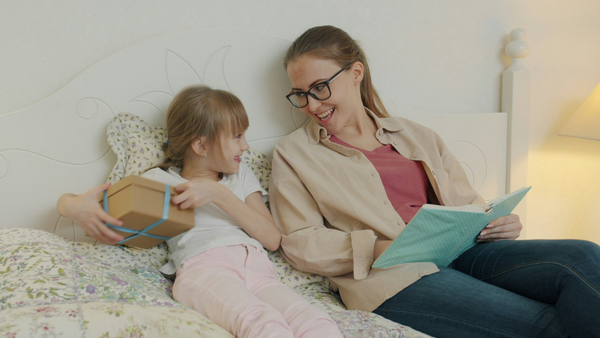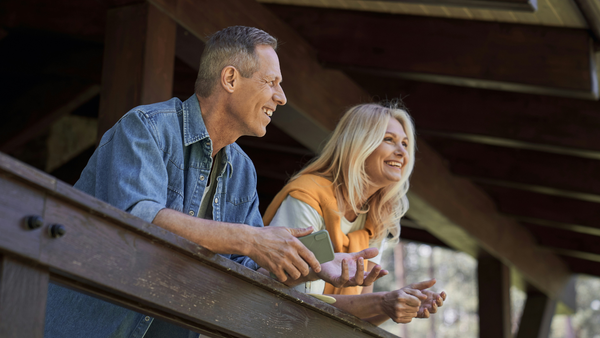By Kayla Peterson
When I was eight years old, there was an annual neighborhood barbecue that had become a staple summer event for families living on our street. For most kids, this was an occasion to eat as much as they wanted, splash around in the pool, and stay up way past their bedtime.
But for me, it was a highly anticipated, stomach-churning ordeal that seemed to approach faster with each passing year.
My mother loved these gatherings and thrived in the buzz of the crowd, effortlessly navigating the throng with a beaming smile and hearty laughter. I, on the other hand, was her polar opposite. The mere thought of socializing with the neighborhood kids, many of whom I barely knew, filled me with a paralyzing dread.
The day of the barbecue finally arrived. I remember standing at the edge of the yard, staring at the festooned tables laden with trays of foods and desserts. The adults were chatting, drinking and laughing, kids were screaming and running around, and I was rooted to my spot, my heart pounding so hard it echoed in my ears. I remember pleading with my mom, begging her to let me stay at home. She gave me a reassuring squeeze and told me it was important to face my fears, that it was just a party and nothing to be afraid of. But she might as well have been speaking a foreign language, because all I could think about was the terrifying sea of faces I had to wade through.
At some point during the event, I found myself needing to use the restroom. But the idea of asking an adult, interrupting their boisterous conversation to ask where the bathroom was, filled me with a dread that was greater than the discomfort in my bladder. I can still remember the mounting pressure and the internal battle that raged within me. Eventually, my body surrendered before my fear, and I stood there, a hot blush creeping up my neck as I felt the warm trickle down my leg, my eyes welling up with tears.
Just as I felt my world crumbling, my mom noticed my predicament. Without missing a beat, she swooped in, wrapped an oversized sweater around my waist, and ushered me into the house, not once betraying my secret to the crowd.
As I lay in bed that night, fresh and clean, I remember feeling a peculiar mix of gratitude for my mom’s swift action and a deep embarrassment for what had happened. Yet, there was also a smidge of relief that the dreaded event was over.
Bad coping mechanisms
Eleven years later, as I sat in the dining hall of my university surrounded by chattering classmates, the memory of that barbecue was still fresh in my mind. The faces had changed, the surroundings were different, but the familiar knot of anxiety was still there, as if I was once again the eight-year-old at the neighborhood party.
The fear of asking questions in class, the hesitation to join club meetings, the reluctance to initiate conversation – all remnants of the same social anxiety I had been fighting since childhood. Despite all the changes, growth, and experience, it was remarkable to note how little had changed in the realms of my inner world.
In the second week of college, I was invited to a party by my friend Tristan, who had gone to the same high school as me. Parties were my nightmare. They were an amalgamation of all my anxieties – a multitude of strangers yelling over loud music and an inescapable pressure to fit in. But in my desperate quest to appear normal, I accepted the invitation.

The party was exactly as I had dreaded. The crowd, the noise, the energy – it was overwhelming. I felt like a minnow in a sea of sharks. I stood in a corner, nursing a Solo cup of soda, already exhausted from politely shrugging off a few guys who had approached me that night, when Tristan appeared with two cups in hand. “This is college, dude,” he laughed, handing me a cup filled with a mix of alcohol. “Loosen up a bit.”
The first sip was awful, a bitter concoction that burned my throat. But as I continued to drink, a strange feeling took over. I felt a veil of warmth descend upon me. My racing thoughts seemed to slow, my tense muscles relaxed, and I found myself laughing at a joke that wasn’t particularly funny. That night, I spoke to more people than I had in the entire week. I felt light, sociable, and even enjoyed myself.
As weeks turned into months, this became my new coping mechanism. Parties weren’t as terrifying anymore, and neither were social interactions. I carried a flask in my bag, taking occasional swigs before class presentations or group studies. Alcohol became my invisible armor, shielding me from my anxieties
But as comforting as the warmth of alcohol was, the next morning always brought with it an unbearable cold. My anxiety would return tenfold, now accompanied by guilt, physical discomfort, and a fear that I was losing control. The “cure” was starting to feel like a poison.
Trying therapy for social anxiety
That was when I decided to seek help. My academic advisor referred me to a campus counselor, who diagnosed me with social anxiety disorder. The road to recovery was tough, laden with therapy sessions, exercises, and learning healthier coping mechanisms (see below). I slowly started facing my fears head-on instead of hiding behind alcohol.
Looking back, I realize how I’d fallen into the trap of self-medication. It seemed like an easy fix – a magic potion that took away my fears. But it was a temporary solution, a crutch that was hurting more than helping. It’s important to remember that dealing with anxiety or any mental health issue is a journey, one that requires patience, understanding, and more importantly, help.
Now, having been out of college for nearly six years, my social anxiety hasn’t completely disappeared. However, I’ve learned to accept myself as I am: an introvert with social anxiety, who loves studying mycology, enjoys solitude, and can socialize without relying on a flask.
In the end, my advice to others dealing with similar struggles is this: don’t hesitate to seek help. We all have our battles, and it’s okay to ask for a hand to fight them. Mental health matters, and remember: it’s okay not to be okay.
Tools that helped me deal with social anxiety
In my own experience, I’ve learned that coping with social anxiety is a personalized journey, and what works for one person may not work for another. However, there are certain techniques and exercises that I believe can be beneficial to many people struggling with social anxiety.
I want to share a few tools and strategies that have helped me navigate my way through social situations, and hopefully, they can offer you some support, too.
Cognitive Behavioral Therapy (CBT)
CBT has been my most effective tool in managing social anxiety; it’s a type of psychotherapy that helps you understand how your thoughts and beliefs influence your behavior and feelings. CBT helps you identify negative thought patterns and teaches you how to replace them with healthier, more positive ones. It’s advisable to seek professional help to utilize CBT effectively.
For those struggling to find a therapist, I recommend Psychology Today’s Find a Therapist tool. You can use it to search for licensed, accredited therapists in your local area, and can choose between in-person and virtual visits.
Deep breathing exercises
Anxiety often triggers a “fight or flight” response, causing physical symptoms like a racing heart, shaky hands, and rapid breathing. Practicing deep breathing exercises can help manage these symptoms by slowing down your heart rate and promoting relaxation. A common technique is the 4-7-8 breathing method, where you inhale for 4 seconds, hold your breath for 7 seconds, and exhale for 8 seconds.

Mindfulness & meditation
Mindfulness involves being fully present in the moment and acknowledging your thoughts, feelings, and sensations without judgment. Techniques such as body scan meditation, where you focus on different parts of your body and consciously relax them, can be beneficial in dealing with the physical symptoms of social anxiety.
Exposure therapy
This is a therapeutic approach that gradually exposes you to the situations that trigger your anxiety, helping you become less sensitive over time. It’s best to approach this under the guidance of a professional who can provide a safe environment for you to explore your fears.
Physical exercise
Regular physical activity can have a positive impact on anxiety by boosting your mood, acting as a natural stress reliever and helping you feel more confident. Yoga, jogging, or even a brisk walk can be beneficial.
Self-care practices
These can include any activities that make you feel relaxed and happy. Reading a book, taking a warm bath, listening to music, or spending time in nature may help reduce anxiety and promote wellbeing.
Joining a support group
Connecting with others who are experiencing the same struggles can provide comfort, reduce feelings of isolation, and provide practical advice.
Remember, it’s okay to take small steps and celebrate your progress along the way. It’s important to seek professional help if you’re struggling with social anxiety, and it’s okay to go at your own pace.
About the author
Kayla Peterson is an Austin-based writer with a passion for health – both mental and physical. In addition to Bened Life, she’s written for physicians, skincare brands, and publications such as The American Society of Plastic Surgeons. When she isn’t writing, she’s either hunting mushrooms in the wild, trying a new foodie-centric recipe, or bingeing some bad reality TV.
Other articles from Kayla Peterson:
Neurodivergent Eating: Developing a Healthy Relationship with Food
A New Way to Test for Parkinson’s Disease
Bened Life’s All-New Packaging: Easier on You & the Planet







